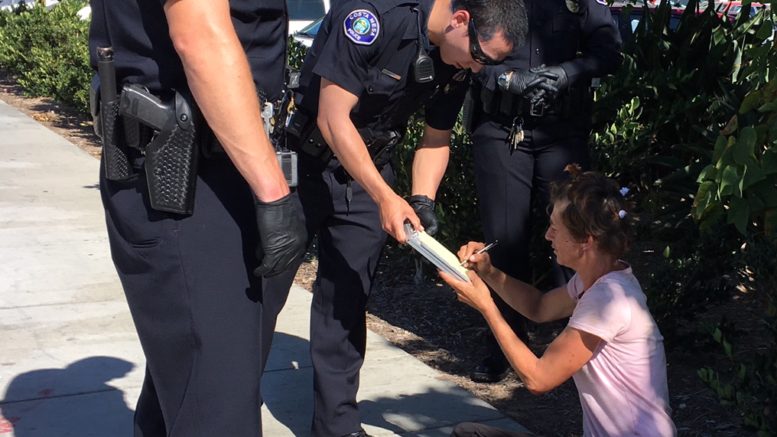What Are the 4 Types of Community Policing? A Complete Guide
What Are the 4 Types of Community Policing? A Complete Guide
Last Updated: October 29, 2025 | Reading Time: 6 minutes

Table of Contents
Community policing has transformed law enforcement across America, creating a collaborative approach where police and citizens work together to enhance public safety. Since 1994, the U.S. Department of Justice has provided grants to over 13,000 law enforcement agencies to support community policing initiatives. But what exactly makes community policing effective?
The answer lies in understanding its four fundamental dimensions. These four types of community policing work together to create a comprehensive strategy that addresses crime prevention, builds trust, and strengthens relationships between law enforcement and the communities they serve. Let's explore each dimension and how they contribute to safer neighborhoods across the United States.

Type 1: Philosophical Dimension - The Foundation of Community Policing
The philosophical dimension represents the core ideas and perspectives that define community policing. This dimension focuses on gathering information and resources directly from community members to identify problems and develop solutions collaboratively.
Core Principles of the Philosophical Approach
At its heart, the philosophical dimension establishes the mindset that police officers aren't simply enforcers of the law—they're partners with the community. This approach emphasizes understanding community problems from the residents' perspective and working together to address root causes rather than just responding to symptoms.
Key purposes of the philosophical dimension include:
- Consistent Communication: Establishing ongoing dialogue between law enforcement and community members
- Public Perspectives: Incorporating citizens' viewpoints into policing strategies
- Problem-Solving Partnership: Enabling police to help communities solve problems and maintain order
- Conflict Resolution: Finding effective ways to resolve conflicts that make communities feel safer
This philosophical foundation connects directly to the Peelian Principles established by Sir Robert Peel in 1829, which emphasized that police effectiveness depends on public approval and cooperation. Modern community policing in America builds upon these timeless principles, adapting them to contemporary challenges.
Type 2: Strategic Dimension - Turning Ideas into Action
The strategic dimension transforms community policing philosophy into concrete action plans. This element focuses on developing tools and approaches that address the root causes of crime rather than merely reacting to criminal incidents after they occur.
Long-Term Solutions for Community Safety
Law enforcement agencies use the strategic dimension to create sustainable, long-term solutions that prevent crime and build lasting community benefits. This approach requires careful analysis of crime patterns, community needs, and available resources to develop comprehensive strategies.
Strategic community policing involves several key elements:
- Identifying underlying causes of criminal activity in specific neighborhoods
- Developing targeted intervention programs based on community input
- Creating partnerships with schools, businesses, and social services
- Implementing preventive measures that address issues before they escalate
For example, strategic policing might address homelessness-related crimes by partnering with social services rather than simply arresting individuals. Similarly, youth crime prevention might involve collaboration with schools and after-school programs to provide positive alternatives for young people.

Type 3: Tactical Dimension - Implementing Community Programs
While the strategic dimension focuses on planning, the tactical dimension concentrates on program development and implementation. This element transforms ideas into specific programs, strategies, and daily practices that law enforcement officers can execute on the ground.
Building Interactive Relationships
The tactical dimension aims to create interactive relationships between law enforcement and community members through hands-on programs and activities. These initiatives make community policing visible and tangible to residents.
Common tactical community policing programs include:
- Foot and Bicycle Patrols: Officers patrolling neighborhoods on foot or bicycle to increase visibility and accessibility
- Neighborhood Watch Programs: Organizing residents to report suspicious activity and prevent crime
- Youth Engagement: Police-sponsored youth programs, school resource officers, and mentorship initiatives
- Community Meetings: Regular forums where residents can voice concerns and work with police on solutions
- Beat Assignment: Assigning officers to specific geographic areas for extended periods to build familiarity
Successful examples include Houston's Youth Police Advisory Council, which gives high school students a platform to communicate with police leadership, and New Jersey's ARRIVE Together Program, which sends mental health professionals alongside police on crisis calls. These tactical approaches create mutually beneficial relationships that achieve community goals while improving public safety.

Type 4: Organizational Dimension - Structural Change and Support
The organizational dimension addresses how law enforcement agencies must evolve internally to support community policing effectively. This dimension emphasizes promoting community policing as a core strategy throughout the entire department, not just in specialized units.
Transforming Police Department Culture
Successful community policing requires fundamental organizational changes in how police departments operate, train officers, and allocate resources. This dimension ensures that community policing isn't just a program—it's an organizational philosophy that guides every aspect of law enforcement operations.
Key organizational changes include:
- Training Programs: Comprehensive training for all officers in community engagement, cultural competency, and problem-solving
- Decentralized Authority: Giving officers more discretion and initiative to address community-specific issues
- Performance Metrics: Measuring success by community satisfaction and crime prevention, not just arrest numbers
- Departmental Accountability: Increasing transparency through community oversight and regular reporting
- Resource Allocation: Dedicating personnel, funding, and equipment specifically to community policing initiatives
The organizational dimension also manages how information flows within departments and between police and community members. Data collection and analysis help identify community problems and concerns, enabling departments to deploy resources more effectively and measure the success of community policing programs.
This structural transformation often represents the most challenging aspect of implementing community policing, as it requires changing long-established departmental cultures and practices. However, it's essential for ensuring that community policing becomes sustainable rather than a temporary initiative.
Frequently Asked Questions About Community Policing Types
How do the four dimensions of community policing work together?
The four dimensions are interconnected and mutually reinforcing. The philosophical dimension establishes the mindset and values, the strategic dimension plans long-term solutions, the tactical dimension implements specific programs, and the organizational dimension provides the structural support needed for success. Together, they create a comprehensive approach to community-oriented policing.
What's the difference between community policing and traditional policing?
Traditional policing typically focuses on reactive responses to crime—responding to calls and making arrests. Community policing emphasizes proactive crime prevention through partnerships with community members, addressing root causes of crime, and building long-term relationships. Community policing views police as problem-solvers and community partners rather than just law enforcers.
Can small police departments implement all four dimensions effectively?
Yes, community policing can be adapted to departments of any size. While larger departments might have specialized community policing units, smaller departments can integrate these principles into everyday operations. The key is commitment to the philosophy and willingness to engage with the community, which doesn't require extensive resources or large staffs.
How is the success of community policing measured?
Success is measured through multiple metrics including crime rates, community satisfaction surveys, trust levels between police and residents, participation in community programs, response times, and the number of collaborative problem-solving initiatives. Modern community policing emphasizes quality of life improvements and prevention over traditional metrics like arrest rates.
What role do community members play in community policing?
Community members are active partners, not passive recipients of police services. Residents participate by attending community meetings, joining neighborhood watch programs, reporting concerns, providing input on policing priorities, volunteering in youth programs, and collaborating with officers to identify and solve local problems. Effective community policing requires active participation from both police and citizens.
Conclusion: The Integrated Approach to Public Safety
Understanding the four dimensions of community policing—philosophical, strategic, tactical, and organizational—is essential for anyone interested in modern law enforcement and public safety. These interconnected elements create a comprehensive framework that transforms how police departments operate and how communities engage with law enforcement.
The philosophical dimension establishes the values and mindset, the strategic dimension develops long-term solutions, the tactical dimension implements hands-on programs, and the organizational dimension provides structural support. When all four dimensions work in harmony, they create safer communities, build trust between police and residents, and address the root causes of crime rather than merely responding to its symptoms.
As communities across the United States continue to evolve, community policing remains a vital strategy for creating safer, more cohesive neighborhoods where law enforcement and citizens work as partners toward shared goals. By understanding and implementing these four dimensions, police departments can build lasting relationships that benefit everyone.
Did You Find This Guide Helpful?
Share this article with others interested in community policing and public safety!
Sources: Information compiled from Officer Survey Community Policing Elements, U.S. Department of Justice Community Policing Resources, Wilson College Community Policing Research, and Wikipedia Community Policing Encyclopedia.